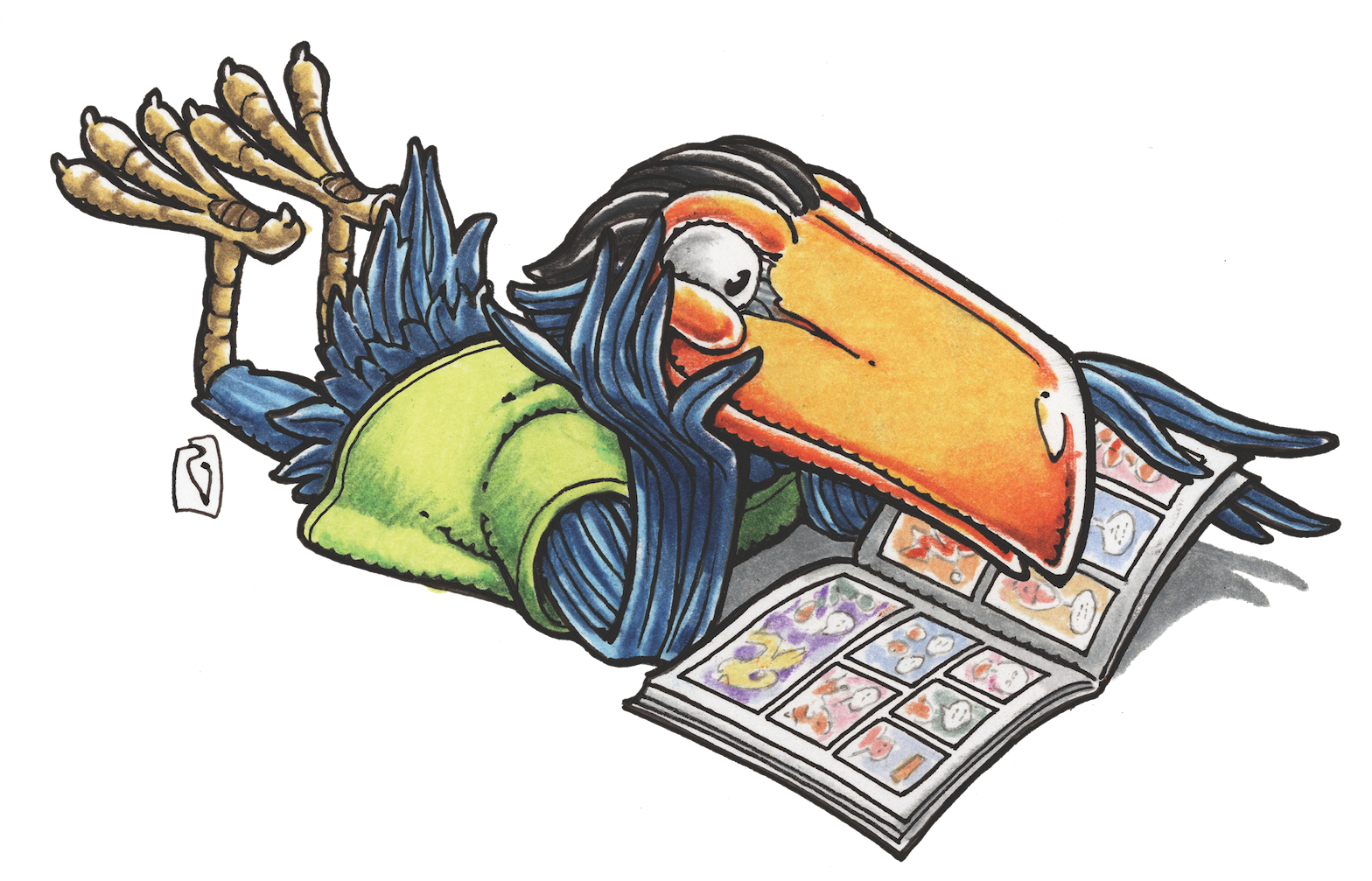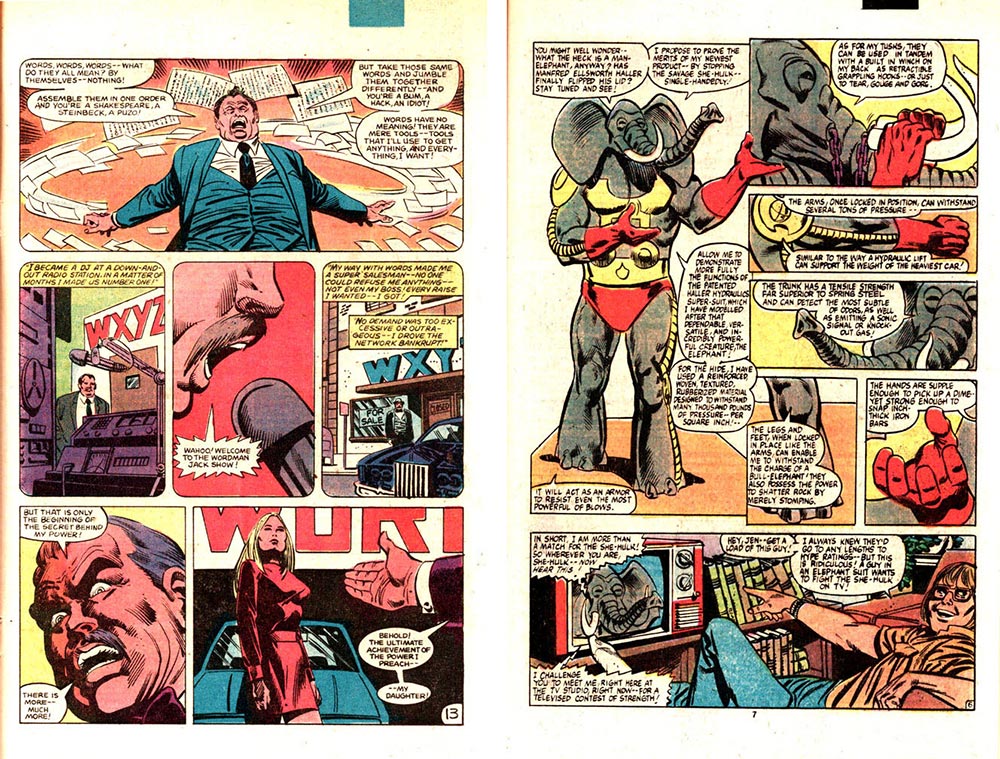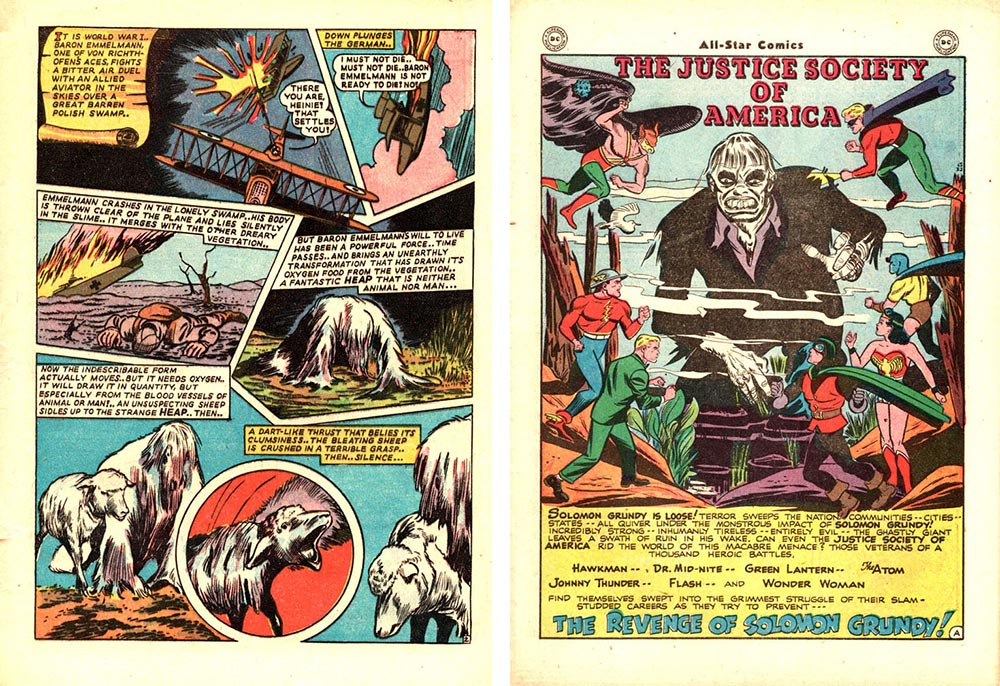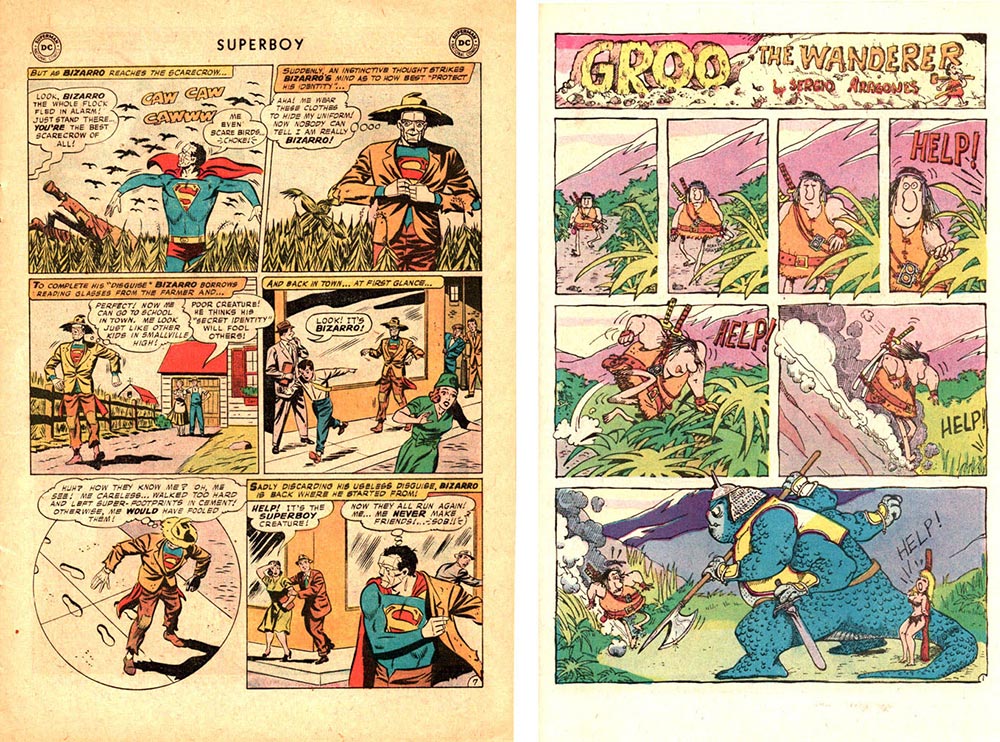MAGGIE’S WORLD BY MAGGIE THOMPSON
Maggie’s World 085: Vacuous Villainy

The 37th Maggie’s World focused on evildoers and their motivations and challenges.
The motivations were summarized as: Hunger. Control. Insanity. Vengeance. Occupation. Plot Necessity.
But, even while the funny-animal villain Big Bad Wolf was mentioned, most of the ones discussed in 2016 were memorably menacing. Recently, though, I came across an article that my late husband, Don, and I wrote in 1982 for LOC magazine #5. We began, “A man may be judged by the company he keeps, but a comic book hero or heroine often is judged by the villains he or she fights.
“Consider: Would Spider-Man have become a hit, if, instead of battling Dr. Octopus, The Vulture, and Electro, he had been forced to fight such costumed dregs as Porcupine, Leapfrog, and the Unicorn? Those maladroit malefactors helped hold back Iron Man and Daredevil for years. It’s hard to build a rep by fighting born losers, which these yutzes certainly are.

“Perhaps, just perhaps, the She-Hulk might still have her own comic were she not pitted against villains who were boring (The Word [introduced in The Savage She-Hulk #9]) or simply silly (Man-Elephant [in #17]).”
Mind you, Marvel’s She-Hulk has had a heck of a lot of titles since 1982, with the longest coming years later. (The Sensational She-Hulk ran May 1989 to February 1994, and one of several She-Hulk series ran December 2005 to April 2009.) Nevertheless, consider the point—that a lame opponent can affect the reputation of a hero. (Man-Elephant only appeared in two later stories, though The Word made it to seven.)
Others we mocked in “Dangerous but Inept” more than three decades ago included Scorpio (introduced in Marvel’s Nick Fury, Agent of S.H.I.E.L.D #1). And there were a bunch from DC, some with pre-Silver Age debuts: Killer Moth (Batman #63), Tattooed Man (Green Lantern #23), The Turtle (Showcase #4), and Hellgrammite (The Brave and the Bold #80)—and we went on at length about The Ringmaster and his Circus of Crime (originally appearing in Hulk #3). Concerning that last-named, we wrote of “a long, unbroken descent into loserdom that culminated with Howard the Duck pounding the poo out of The Ringmaster.”
The essay ended on a note of hope: “If Chris Claremont can make a good villain out of Magneto, there may still be hope for the Ringmaster and his shopworn Circus of Crime.”
Comedic Cads
Back then, we pointed out that no examination can cover all the instances—and that some seemingly idiotic opponents turned out to be memorable in the years that followed. In fact, some are downright delightful. Heck, fans can even find themselves in sympathy with a few of the sillier scoundrels. Amusingly (to me), I long credited as a forgetful felon the one-shot Pete Puma in Warner Brothers’ Merrie Melodies episode “Rabbit’s Kin” (1952). He was definitely not bright—but research eventually nailed the actual character I’d taken as symbolic my occasional memory losses. It was, simply, The Big Bad Wolf (also a one-shot villain, sharing the spotlight with Sylvester) in Looney Tunes’ “Red Riding Hoodwinked” (1955). (“Now, where was I going? Oh, yeah, Grandma’s house!”)
But, heck, if you try to build a list of such cartoon characters, you’ll quickly lose count because of so many bad guys whose traits includes dimness. That’s partly because the comedy is often aimed at kids who can enjoy such silliness. Maybe it’s Noodles Romanoff or Solenoid Robots causing trouble in the Roger Ramjet series. Maybe it’s—oh, just make your own list.

Mindless Menaces
More intimidating threats can also be seriously impaired. These include The Heap (introduced in Hillman’s Air Fighters #3, then brought back to life by Eclipse), Swamp Thing (DC’s House of Secrets #92 and then morphed in Saga of the Swamp Thing), Solomon Grundy (DC’s All-American Comics #61), Walking Dead (The Walking Dead #1), Man-Thing (Savage Tales #1), and a bevy of other muck monsters. There’s even a vast assortment of animated mummies, “zuvembies,” zombies, and other walking dead. (For years, they were forbidden by the original Comics Code in the 1950s: General Standards Part B 5: “Scenes dealing with, or instruments associated with walking dead, torture, vampires and vampirism, ghouls, cannibalism and werewolfism are prohibited.”)
They shamble, they persist, they endanger folks so as to necessitate the intervention of one or another hero. They’re a danger, even though they lack the intellect of even the aforementioned Big Bad Wolf. Their plodding determination can be scary all by itself.

But …
Do keep Bizarro in mind. Even those who have never read a DC comic book may know the concept expressed in the word “Bizarro.” [It’s even the title of delightful panel cartoons by Dan Piraro.] The concept was milked for hilarity in a plethora of stories (“Breaking mirror will bring me seven years good luck!!”). But the character’s first outing (in DC’s Superboy #68, October 1958) was heartbreaking. And, although Bizarro was resurrected from the tragic origins of that Otto Binder tale to become a humorous tradition, DC occasionally revisits the idea for its tragic possibilities.
That Bizarro introduction took an entire issue. Another powerful dim-bulb menace entered the world in a mere four pages—in Eclipse’s Destroyer Duck #1 in 1982. That short-short story only hinted at the output that was to come, and Groo remains a consistent classic example of a mighty misadventurer. (Wiki summarizes that he stars in “one of the first widely successful creator-owned comics … and one of the longest-running collaborations in comic book history.”) Sergio Aragonés’ team of Mark Evanier, Stan Sakai, Tom Luth, and himself have made a wild success out of a character whose charm comes from causing frequent disasters.
In Any Case …
While I’m dealing with pathetic goofs, is this the time to admit one of my own? In Maggie’s World #82 (“Who Was That Masked Man?”), I managed to mess up, perhaps because of the challenges of compiling lists. If you followed my advice to go for safe cosplay in imitating comics characters who encased their entire heads, well, gosh. My list was Golden Age Sandman (1939), Doctor Fate (1940), Red Tornado (1940), Ghost Rider (1949), Spider-Man (1962), Doctor Doom (1962), Iron Man (1973), Silver Age Daredevil (1964), The Question (1967), Deathstroke (1980), Rorschach (1986), The Mask/Big Head (1987), and Deadpool (1991). Good gravy. Did you spot it then? Now?
Just in case, let me point out that you won’t get into venues that require masking, if you try going as The Man without Fear—because even fearlessness should include polite caution and concern for fellow-shoppers.
Here’s to wise ways, even as we celebrate often-fallible individuals!
Maggie’s World by Maggie Thompson appears the first Tuesday of every month here on Toucan!